Laser Stations
High-Precision Satellite & Space Debris Observations
DiGOS is the first stop for Satellite Laser Ranging Systems and Optical Ground Stations.








DiGOS is the first stop for Satellite Laser Ranging Systems and Optical Ground Stations.
The systems are based on COTS components from the best European and international suppliers, and are operated with our own SCOPE control software. DiGOS has realized various complete turn-key systems for customers around the world. Built on both the solid heritage of our own developments and the newest developments of the international scientific community, the DiGOS systems continue to set the state of the art. Apart from the traditional SLR systems, DiGOS also offers Space Debris Tracking Systems, and Optical Ground Stations for Laser Communications, Quantum Key Distribution, and other applications.

DiGOS provides seismic measurement equipment and installation support for research, monitoring and civil engineering activities worldwide. Our seismic data recorder DATA-CUBE³ and the plug & play add-on CCUBE for real-time data streaming are the basis of our product portfolio. Over the years we have developed various tailored solutions for our customers that support almost every seismic sensor on the market as well as various infra-sound sensors. Our field-proven devices and solutions are continuously used in more than 50 countries around the world in all geographic regions including the challenging Arctic, Antarctic and desert environments.

We realize that many of our customers have special requirements for their research or operational systems. Therefore, we offer tailored technical solutions which exactly match our customer’s needs. As a system integration with in-house software and hardware developments, we are able to efficiently adapt our products to different needs and specific environments. We also offer consulting services, staff training and maintanance / repair of existing systems. Get in touch with us to discuss your ideas!
DiGOS is a system integrator in the domain of geophysical & geodetic observation systems. We are an interdisciplinary team of computer scientist, engineers, geophysicists, mechatronics and affiliated experts with unique technical expertise.
We offer the complete chain of project execution tasks from analyzing and elaborating the initial idea with the customer until final deployment and maintenance. Solid planning, structured development and related product assurance methods are applied as a standard in all our projects.

We were pleased to welcome Manja Schüle, Brandenburg’s Minister for Science, Research and Culture, to DiGOS to present our new product line „Phosaris“ in fiber optic sensing technology.

New Space in Action – Handover of the Optical Communication Station to the UniBw Munich
We handed over the ground base station for the optical communication system of the University of the Bundeswehr Munich – an important milestone in the SeRANIS – Mission project.
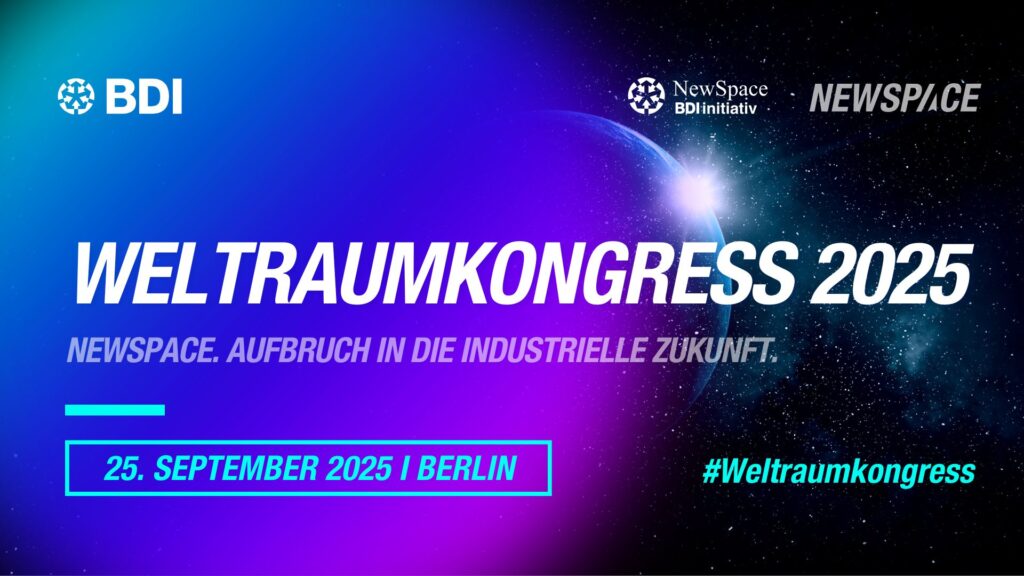
We had a great time on site — with our own booth and lots of inspiring conversations. One big takeaway: Germany is finally putting real weight behind space investments. And that’s good news.
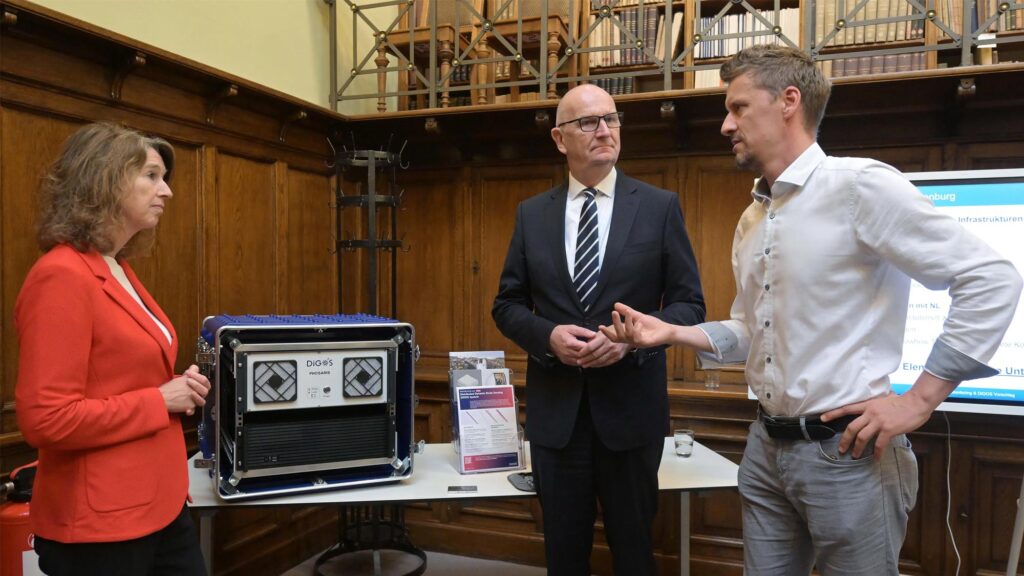
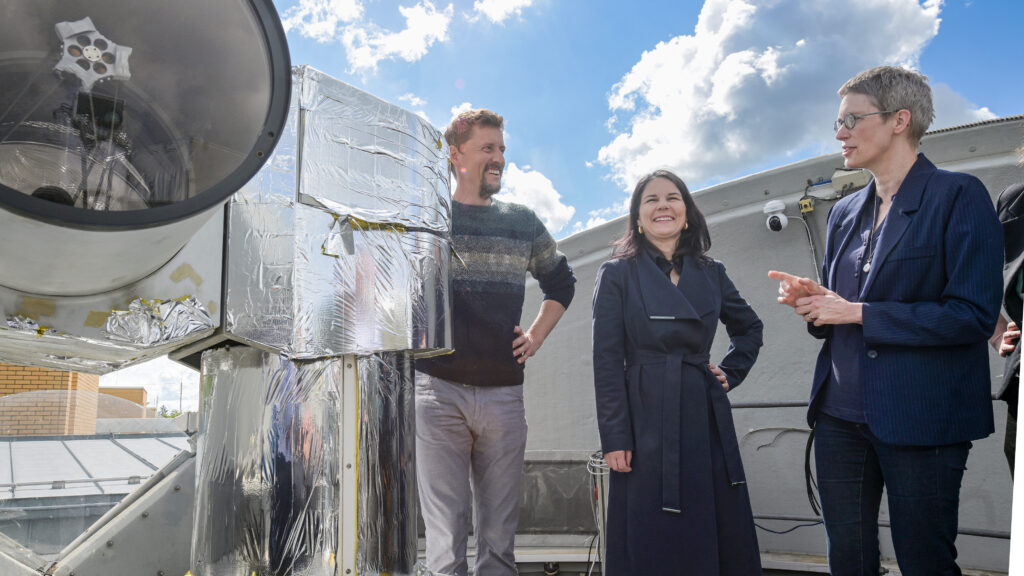
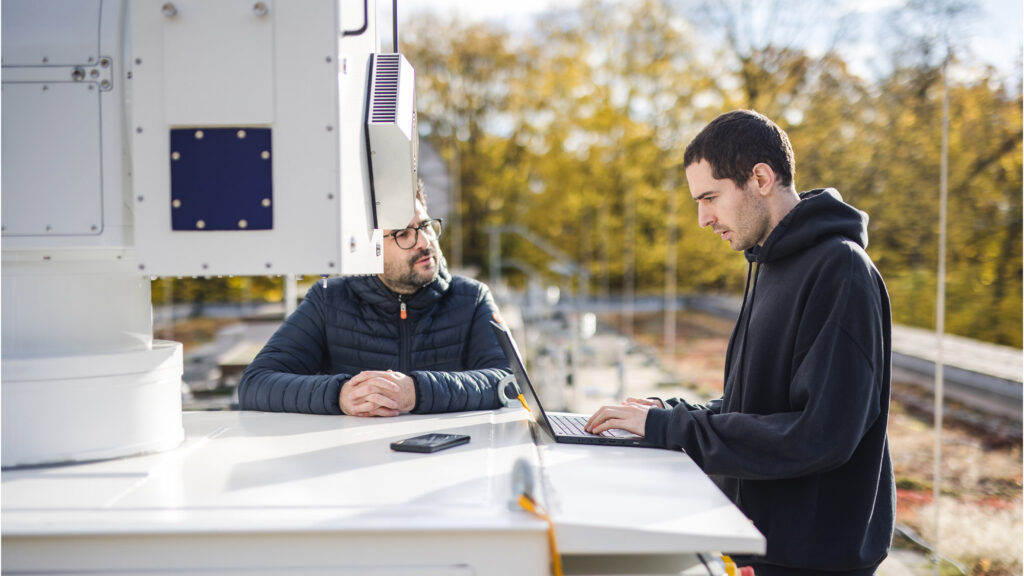
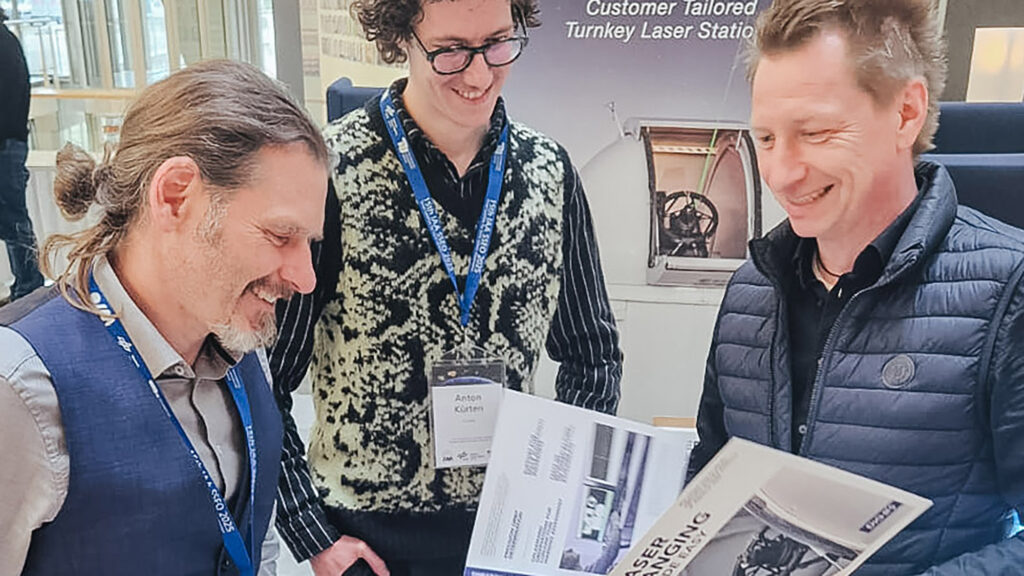
We are excited to be part of SSEO15 in Berlin this week – a key forum for exchanging ideas on current developments in Earth observation using small satellites. The event clearly highlights the importance of reliable and flexible ground segment technologies for modern satellite missions and space safety applications.
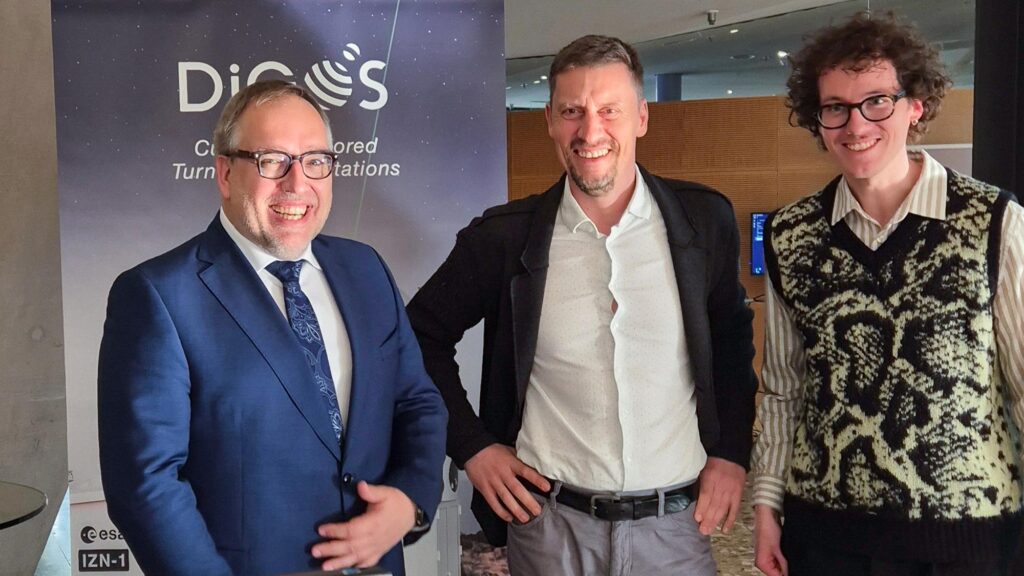
In April, Bonn became the meeting point for the global space safety community: the ESA Space Debris Conference – the largest of its kind worldwide – took place there. Held only once every four years, it brings together leading experts from science, industry, and space agencies.

We look back on two inspiring days filled with technology, exchange, and visions for the future of space travel. A particular highlight was our pitch on “Laser Ranging as a Service.” We had the opportunity to showcase how high-precision laser distance measurement can set new standards in satellite and space debris monitoring – a small yet significant contribution to greater safety in space.
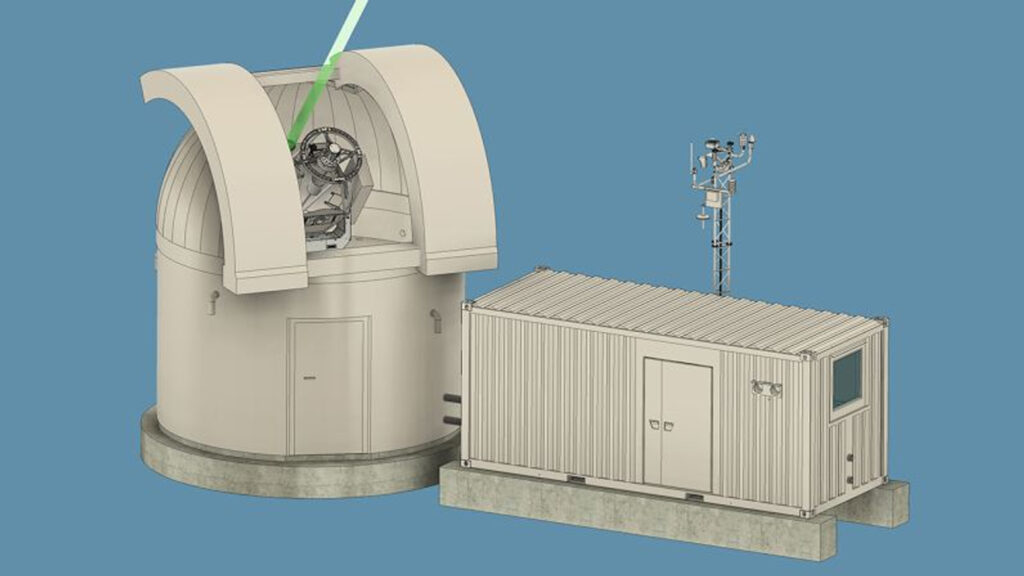
With three new laser ranging sensors, the German Space Agency at DLR will expand the capabilities of the Space Situational Awareness Center by 2027. Together with the German Armed Forces, we operate the center in Uedem to protect Germany’s space infrastructure. The sensor systems are supplied by DiGOS Potsdam GmbH, with funding provided by the Federal Ministry for Economic Affairs and Climate Action.

We are excited to announce that we have been selected by the European Space Agency (ESA) as one of the ESA Rising Stars 2024! This recognition honors our commitment to innovation and our steady growth in the space sector.
As one of only 21 companies in Europe, we were chosen based on our participation in ESA’s technology and development programs over the past 18 months. These programs have played a crucial role in advancing our technologies and opening up new markets.
We are enhancing the concept & design of miniSLR for a mobile satellite laser ranging system. miniSLR was initially developed in cooperation with German Aerospace Center. This new project supported by the European Regional Development Fund (ERDF / German: EFRE).
DiGOS Potsdam GmbH is expanding the SCOPE SW in the direction of automation of SLR stations. An innovative aspect and goal is to fully automatically acquire, filter/analyse, post-process and then send the SLR station measurement products to data centres for final trajectory analysis and trajectory prediction to significantly optimise the performance of SLR systems in their daily satellite observation routine. This innovation, as well as an already completed innovative project involving the development of a laser safety subsystem, is an important milestone towards automation of SLR stations.
The project is supported by the Ministry for Economic Affairs, Labour and Energy of the Federal State of Brandenburg (MWAE) from funds of the European Social Fund (ESF) and the Federal State of Brandenburg.


